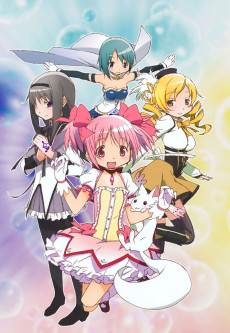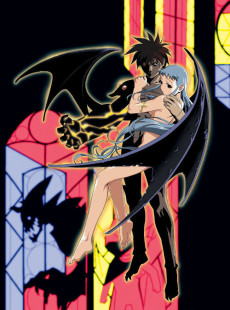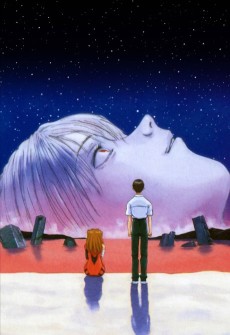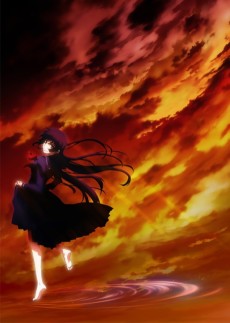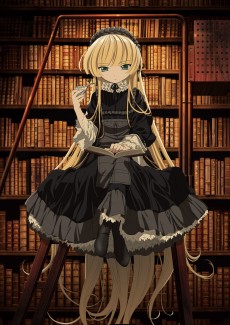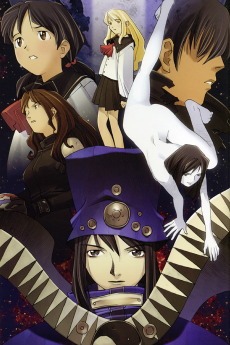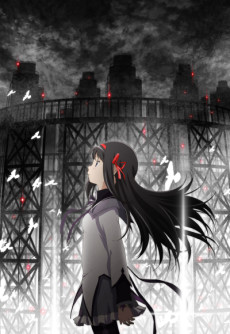COSSETTE NO SHOUZOU
STATUS
COMPLETE
EPISODES
3
RELEASE
December 22, 2004
LENGTH
36 min
DESCRIPTION
The anime is about art student Eiri Kurahashi, who works in an antique shop. One day, he sees the image of a girl in an antique glass. To his shock, she appears to be moving and living out her life before his eyes. He becomes infatuated with the girl, and one night at midnight, somehow makes contact with her. He learns her name is Cossette, and that she was an aristocrat's daughter during the 18th century.
She reveals to him that her spirit has been entrapped within the glass by her murder, which was perpetrated by her betrothed, the artist Marcelo Orlando. To set her free, she tells Eiri, a man must be willing to take upon himself punishment for the sins Marcelo committed.
(Source: Wikipedia)
CAST
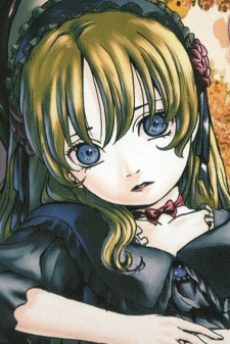
Cossette d'Auvergne
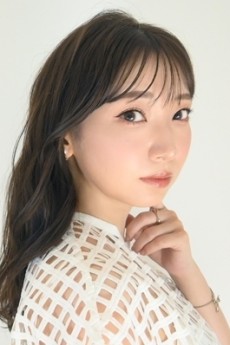
Marina Inoue
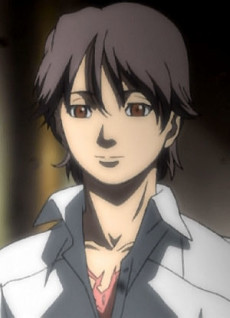
Eiri Kurahashi

Mitsuki Saiga

Shouko Mataki

Megumi Toyoguchi
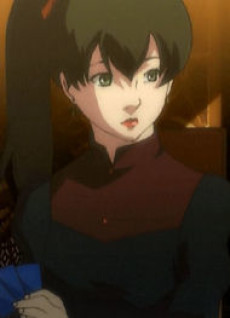
Michiru Yajiri

Ikumi Hayama

Yuu Saiga
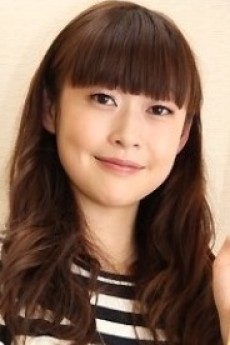
Mamiko Noto
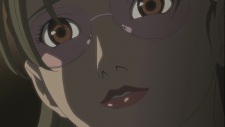
Hatsumi Mataki

Kumiko Yokote
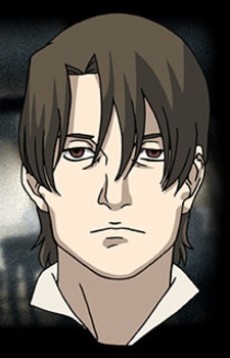
Marcello Orlando

Masashi Ebara

Zenshinni of Shakado
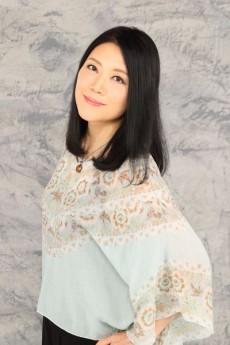
Rei Igarashi
EPISODES
Dubbed
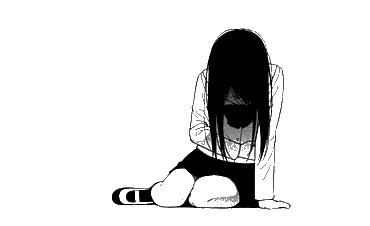
Not available on crunchyroll
RELATED TO COSSETTE NO SHOUZOU
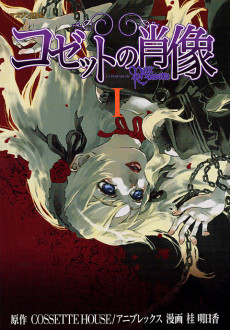 MANGA HorrorCossette no Shouzou
MANGA HorrorCossette no ShouzouREVIEWS

TheRealKyuubey
80/100A tragically unknown hidden gem of horror.Continue on AniListIn Japan, it’s said that if a previously prized item has been abandoned for over 100 years, it comes to life, developing it’s own soul, born from the tragedy of it’s loneliness. If this is true, then you can only imagine the kind of forlorn souls that haunt your average antique shop. Of course, you don’t have to imagine it if you get a job at one of these locations, like Eiri Kurahashi does when he takes a job at his Grandfather’s shop to help pay his way through art school. Honestly, it’s not such a bad job, either. He works near his friends, a lovely young woman often rents the space outside for her tarot card readings, and all he really has to deal with is his grandfather’s compulsive purchases, as the worldly old man is constantly buying up antiques on his travels to sell at his shop for obscene and mostly arbitrary price markups.
One day, he receives a piece from his Grandfather’s trip to Europe, and while it looks like a simple piece of furniture at first, he soon finds out that the piece contains two hidden items… The first is a lovely glass chalice whose rim is tinted with an enchanting swirl of colors, and the second is an exquisite painting of a little white girl, dressed up in gothic lolita clothing like a porcelain doll. Eiri quickly starts to lose himself in this glass, and not too long afterward, he begins to see that same little girl moving around inside of the glass, presenting him with a glimpse into many different moments of her young life, from the innocent to the sad, and to make matters more bizarre, she seems to be completely aware of his presence… Whatever he’s seeing, it’s undeniably what she wants him to see, but the lovestruck Eiri may not be feeling what she wants him to feel. As he continues to get drawn deeper and deeper into the haunted chalice’s mystery, and he uncovers more and more about a centuries old crime, can his body survive the strain that this new liaison is taking on his soul?
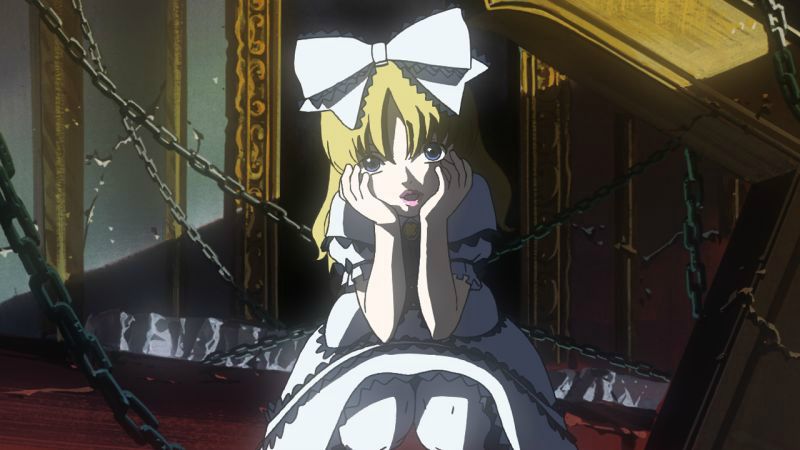
Le Portrait de Petite Cossette was produced by the animation company Daume, which I’ve only spoken about once before, but that was before I started to adopt a consistent structure in my reviews, so I didn’t mention it at the time. For the record, that anime was Shiki, and the similarities are there, although thank God Cossette doesn’t have the same wacky design problems. Daume unfortunately didn’t exist for very long, as it was only active between 1999 and 2010, but from the few titles I have seen, their priorities seem to be pumping out trashy low budget ecchi shows, and saving the bulk of their money for more serious projects, like this, Shiki, and Strawberry Marshmallow, and with these titles, they put a lot of money and effort into animation quality and background detail, creating as realistic and immersive a tone as possible for the stories and characters that people will actually care about, leaving the titty shows that people will watch anyway to suffer the short end of the stick, and I can definitely respect that.
Alternatively, when it comes to Cossette’s visual style, it looks far more like a product of it’s director than it does it’s production company. Akiyuki Shinbou has a rather controversial reputation among anime fans, and while Cossette was his only real undertaking for Daume, he’s spent the majority of his career working for Studio Shaft, where his eclectic visual style has become synonymous with his name. He’s built his career on using strange, unorthodox cinematography to make dialogue scenes look just weird and off-putting enough to distract the viewer from noticing just how little is actually going on in said scenes, and he’s been called pretentious because of this trend… And not unfairly, either, it’s a label he well deserves. His other constant quirk is that he likes to present female characters, especially underage ones, in sexually appealing poses, regardless of what kind of tone the project is going for. His direction was, interestingly enough, one of the biggest criticisms that Madoka Magika received.
Having said all that, his visual trademarks can be used for good. His style added a lot of depth to EF: A Tale of Memories and it’s sequel, but even further back, he did a fantastic job on Le Petite Cossette. There are a lot of visual effects in this production that feel essential to the story, such as intense shadow play and intricate lighting, as well as a lot of CG glass effects and dream like backgrounds, and I honestly can’t think of any other anime director with the broad vision and even broader scope of imagination to pull it off as well as Shinbou does. His unorthodox visual style doesn’t feel wasted or arbitrary here, as it’s a story about art that’s being presented in as artistically daring a way as possible, and there’s some kind of meaning, no matter how small, that can be inferred from every off kilter shot of it. This is of course not to say the series was low budget, or anything… In the moments that rely on traditional movement, it looks fine. It doesn’t look cheaply made, or like they were struggling, or anything like that. I don’t know if i’d call this the best looking piece of Shinbou’s career, but it’s gotta be up there.
With only three episodes ever made, Le Petite Cossette doesn’t have a very large soundtrack, but what it does have is hauntingly beautiful. I shouldn’t really have to expand much farther than that, at least not once I drop the name Yuki Kajiura, one of the most celebrated soundtrack composers in anime history, and her work for Cossette is no exception. While the instrumentations themselves are heart-breaking and exquisitely orchestrated, a lot of it’s tracks are songs with actual people singing lyrics, which is definitely not something you’d expect from most anime. I wasn’t able to find out who sang every track, I could only place names to a few of them, but from what I was able to gather, the singing duties appear to have been split between Kajiura herself and Cossette’s Japanese voice actor, Marina Inoue, both of whom prove to be outstandingly talented singers. There are a few exceptions to this, of course, and I’m pretty sure my favorite track is “Somewhere I Belong,” whose violin chords convey a very real sense of longing and loneliness.
The English dub is a very fine effort from Geneon, which I regret to say was never one of my favorite dubbing companies when it was still around. I was never a fan of how a lot of their dubs felt really samey, and quite a few of them tried way too hard to match the Japanese voices, resulting in awkward, sometimes screechy sounding deliveries. This particular project, led by director Wendee Lee, is a much more subtle effort than I’m used to from them, and I’d even go as far as to say it’s almost as good as the Japanese. One thing that I feel they greatly improved on is the casting of Eiri, who was for some reason played by a woman in Japanese, and yeah, it wasn’t very convincing. They gave the job to veteran Johnny Yong Bosch in the dub, and… You know that thing he does sometimes where he talks without any real inflections, but his voice is still entirely listenable due to how hypnotically soft it is? That works to great effect when playing his character in the real world, bored and distant as he yearns for the world inside the glass. Appropriately enough, he speaks with a lot more enthusiasm and genuine interest when speaking to Cossette.
And speaking of Cossette, Michelle Ruff plays that role, and while she kind of faltered when playing a similar role in Chobits, she actually gives Cossette a bit more personality than her original VA Marina Inoue did, although that could be chalked up to Ruff being an established star at the time and Inoue having just debuted. She plays her role a bit more playfully than Inoue did, and when the time came, she also delivered on the duality of the character nicely. Unfortunately, aside from Tony Oliver’s terrifying portrayal of murderer Marcello Orlando, the rest of the cast feels kind of wasted in smaller roles, including industry heavyweights like Kari Wahlgren, Kirk Thornton, Sam Riegal, Julie Ann Taylor and even Wendee Lee herself, put on strong, subtly emotional performances, considering the limited screen time they were all given. The English adapted script is also more than faithful enough. Yeah, there’s some philosophical changes in episode 3, but they’re workable. The sub is better overall, but both versions are equally listenable.
You know what we don’t have enough of? Stories where people fall in love with ghosts. I absolutely love reading about or just watching the idea of love conquering all getting challenged by the barrier of mortality between the two lovers in question. One of my favorite books growing up was Robert Westall’s The Promise, which was about an English boy falling in love with a beautiful classmate during World War 1, only for her to become a casualty of the legendary conflict. She comes back as a ghost, they’re still in love, and their attempts to rekindle their mortal romance nearly leads him to death’s door. He ultimately must choose between his life and his love, which is the kind of emotional dilemma I could die for. no, that doesn’t make me a Twilight fan, because vampires have physical bodies, and that would be cheating. Also, Twilight sucks.
To be honest, though, Le Portrait de Petite Cossette has one of Twilight’s biggest flaws, in the fact that it features a love connection between a couple who are separated not just by death, but by an uncomfortable age range. Yeah, in all fairness, Cossette was killed over 200 years prior to the story, but she’s still clearly a child. Eiri still falls in love with her, and while their specific ages are never explained, it’s very likely that Eiri is in his late teens or early twenties, while Cossette died between ages 10 and 12, creating a romance that would normally set off my lolicon alarm, if it wasn’t for what the writer was trying to do with it. Taking a look at Cossette’s background, she was the oldest child of an aristocratic family, and she was also a child bride, which was a common enough practice in those days. Her fiance was a family portrait artist who had fallen in love with her after several art sessions, and while the art we’re shown is fairly innocent, there’s a pretty decent chance he was also putting her in some Leo and Kate/Pretty Baby poses when her parents weren’t looking.
Now, it’s kind of a spoiler, but I’m sorry, I have to talk about her death, and honestly, it’s not even that BIG of a spoiler, as I’ll still be leaving the entire third episode a surprise for you… One day, her artist fiance, Marcello Orlando, goes crazy and slaughters her family before killing her, because… Once again, I’m sorry, but here’s the spoiler… Because she was aging. Yeah, he stabs her through the chest with a huge knife to keep her from growing up, because if she did, she would no longer look like the girl he’d fallen in love with, the girl in his portraits. When you add this to the fact that Eiri’s obsession with a little girl who wasn’t real and complete ignorance of the real life woman who’s in love with him feels like a very intentional metaphor for lolicon media and how it indulges a person’s socially unacceptable fantasies to the point of seclusion, this all becomes the most brilliant condemnation of pedophilia and lolicon culture that I’ve ever seen. Well, from anime, at least… The movie Hard Candy does a pretty solid job, too.
And for those of you who are trying to be smart and point out that the main character also falls in love with a little girl, well, he doesn’t come out of this unscathed either. Yeah, his love for Cossette is portrayed as being more pure than Marcello’s… Which isn’t too difficult when you’re being compared to a murderer… But the idea of his love is still shown through the same kind of lens, as it’s ultimately a delusion. Even if the idea of an adult having a physical or romantic relationship with a child wasn’t wholly reprehensible… Which it unquestionably is… It’s fundamentally impossible for an adult who’s attracted to children to have a substantial relationship with one, as children don’t stay children forever. This is why the anime is named after Cossette’s portrait, rather than Cossette herself… Because it has a duel meaning. Her portrait, in this equation, is symbolic of lolicon art, and to a more unsettling extent, child porn. Cossette says at one point in the ova that she hates having her portrait done, and can you blame her? She was killed over the fact that she, as a person, could never have the same kind of eternal youth that her portrait had. This ties into the portrait’s second meaning… It’s her. The portrait, like her, is a ghost of something that once was, and can never be again.
Of course, it also helps that Cossette as a character is never sexualized, or presented to us in a sexually suggested manner. I guess Shinbou did have a sense of restraint and taste at one point. We’re shown how she seduces Eiri, because she needs a man to fall far enough in love with her to willingly sacrifice himself to the torture and punishment her killer never faced so that her soul can be at peace, but they never bother trying to seduce US with her, so points to them on that front. They could have easily tried to have their cake and eat it too, like the use of nudity in Sankarea, but they took the high road. I wish I could say all of the work they put toward creating their metaphor and supporting their point had resulted in a stronger story and overall better writing, but unfortunately, with only three episodes of time at their disposal, a lot of this anime’s potential wound up falling by the wayside. I do wish the other characters would have had more time for development, seeing how there’s quite a few of them and a lot of them seem genuinely likeable, and I wish they’d drawn the story out more so that it could be enjoyable to people who DON’T want to put in the work to understand it, but what are you gonna do.

Le Portrait de Petite Cossette was originally available from Geneon entertainment, and with that company long since dead and buried, it’s since been rescued and redistributed by Sentai filmworks. Both DVDs are available for cheap online, and the only real difference between them is that the Geneon release has a pointlessly higher content rating. You also get a nifty poster inside, which is awesome. The manga adaptation is also available stateside from Tokyopop, and is just as easy to find online. As far as I know, no legal streaming site is airing it.
Le Portrait de Petite Cossette is, at least for what it tries to do, one of the best independent OVA series I’ve ever seen. Despite it’s weaknesses in characterization and plot, it tells an engaging story with an important message lurking beneath the surface. But putting all of that silly depth stuff aside, though, is this a good, spooky show to watch on Halloween? You bet your sweet ass it is. Despite all evidence to the contrary, you want Eiri and Cossette to reach some sort of positive conclusion at the end(Even if you understandably don’t want to see them wind up together in any way, shape or form), and you will feel legitimately frightened for both of them, as well as sympathetic to their situations. In terms of it’s visuals, you could argue that it was ahead of it’s time, as it holds up far better now than it did when it was originally released, making it a title you really wouldn’t guess the age of, unless you judged by the actors involved. It’s smart, complex, and a feast for the eyes, so I highly recommend adding it to your Halloween watch list. I give Le Portrait de Petit Cossette an 8/10.

StorLucilfer
85/100The Eye of the BeholderContinue on AniList
This is a story about Love and Obsession This is a story about Beauty and Materialism This is a story about Karma and Retribution This is a story about Art This is Le Portrait de Petit Cossette
Introduction: Everyone likes art, right? When I say this, I don't just mean being a devout van Gogh fanatic or being knowledgeable on all the great artists of the Renaissance Period. I mean liking art in one of its many forms, from a conceptual standpoint. You watch anime? You like art. You play video games? Guess what? You like art. Let me lay this on you: Your mom's pussy was the canvas; your dad's dick was the paintbrush. BOOM! You're the art.
Sorry, couldn't resist the reference. Though I believe it fits the theme well; everything is art, and everyone likes art. But, if everyone and everything is art, then what distinguishes us from one another? It's our own, personal perception of the art around us and the interpretations we draw from it. For example, one man could look at a tree and think it was one of the most beautiful things he's ever seen. Another man could see that same tree and think of it as nothing more than a large, protruding stick. Who would you say was correct in their analysis of the tree? The answer: It doesn't matter. They're both correct from their own perspectives yet wrong according to the other's. There is no point setting absolutes with art, as any number of opinions can be drawn from any one piece of art. This principle is essentially what Le Portrait de Petit Cossette is all about.
Story/Art/Characters: Forgive the verbose prelude, now onto the series itself. For all I can say about this series, it has an incredibly simple story. Its premise could be told in a few lines of text, the whole plot itself could be summarised in about five minutes or so. If this is the case, then how does it fit over three thirty-seven minute episodes? This is mainly due to the visual direction and animation.
I can liken the direction to that of the Monogatari Series or FLCL, in the sense that it utilises a lot of bizarre imagery and odd camera angles. Not quite as absurd as Monogatari's visuals and not as bombastic as FLCL's. This sort of direction can be jarring to some and paired with Cossette's indirect way of storytelling, it may not be everyone's cup of tea. You will tell from the first episode if it's not for you. I think it does a great job of pleasing your eyes with pretty art while simultaneously stimulating your mind by questioning your own opinion on art as an idea and concept.
Was considering leaving out characters altogether as there's really not much to say in this department. In situations like this, I ask myself, 'Does this story need great characters? Would they contribute much to what the series was trying to convey?'. In this case, I'd say no. For many series, the characters are the driving force and embody the themes of the story - serving as the catalyst behind the series' effectiveness in projecting its concepts. Cossette is not of this ilk, quite the contrary actually. The characters, to me, act as readers. In short, they are just there to paint the picture through their dialogue and interactions, rather than be of any substantial value individually. If someone was to read you a story, you wouldn’t usually think much of the reader as opposed to the story itself, but the way in which they tell the story can greatly affect the experience – for better or worse. That’s how I look at it. They served this purpose well though I guess that won't be enough to excuse the lack of characterisation for some.
The main element of the story is two men's differing interpretations of art. The art in question: a young lady. One sees her heart; One only sees her external appearance. One sees her beauty as a living, transient being; One only sees her beauty as something to be displayed. One acknowledges the impermanence of her physical looks as a part of her beauty; One can't accept such beauty going to waste and wishes to immortalise her visage. In other words, the primary theme is the relationship between the art and the artist. This relationship is closely explored through the characters to display a connection that is intimate and almost symbiotic. Seeing this portrayed by living humans puts an interesting spin on the concept, as this challenges you to look at it from two standpoints: an artistic one and a human one. What does the artist think of their art? What does the creation think of its creator? This is examined artistically, like a painter and the painting, and humanly, like the one being painted and the one who painted them.
Note the distinction between ‘painter’ and ‘the one who painted’. While some art is very personal, it does not always reflect the artist as a person. Going back to the aforementioned men; one of them is a superior artist, but an evil person. His art is beautiful but barren – it is not fuelled with emotion or passion, nor is it a product of love or creative ambition. It is clinical and cold; created out of compulsion as opposed to artistic whim. The quality can’t be denied, and it is hard not to admire the talent displayed, but it is also hard to stomach knowing who created it, as this, whether we’re aware or not, influences our perception of the art in question. While there is a relationship between the art and the artist, there is also a relationship between the art and the audience. Art is whatever you perceive it to be; while there is usually an intended takeaway, anything that you draw from art (within reason), is valid. As mentioned prior, the artist can affect the audience’s view on the art, even if there is no tangible connection between the two. Cossette shows that art is more than we often give it credit for. Art is diverse and dynamic, recreational and transformative; art is alive. It lives in the minds and hearts of all.
Conclusion: All in all, I love this OVA; I'd go as far as to say it is one of my favourite pieces of visual art ever made.
A question: Who would you say was correct in their analysis of the young lady? The answer: It's up to you. Putting ethics aside and looking at it from a purely artistic standpoint, both interpretations are valid and acceptable. When you stand in awe of a flower, you rarely acknowledge the fact that it's a living organism - yet you doubtless acknowledge its nice colours and pretty shape. So, maybe the second man isn't so wrong, that's the true beauty of art; any interpretation can be considered.
That's the beauty of art.
That's the beauty of Le Portrait de Petit Cossette.
Fotsuan
70/100When they say "art", I'll be thinking of Cossette; one of the most misunderstood works of fiction.Continue on AniListUsually, I tend to watch anime for their plot and characters. Cossette no Shouzou is the perfect example of a show that does not need them to succeed. It may follow a main story, but what's most important is its artistic ingeniousness. And I do not mean its art or animation; I mean everything about this fictional work. The music, the animation techniques, the simple story with its thrilling portrayal, and last but not least; the fact that it revolves around art itself. Truly, Cossette no Shouzou is not an easy watch for everyone. It's a niche piece of art, full of risks and pretentiousness. But it knows very well what it is, and that's what makes it beautiful and fascinating.
To begin my short analysis, I'll mention what I found best - and this was the atmosphere. On one hand, we have Yuki Kajiura (Noir, Kara no Kyoukai, Fate/Zero) giving it her best to create the most fitting horror vibes with her music, on the other hand we have Shinbou Akiyuki (Madoka Magica, Monogatari series) who is a unique director, and loved by his audience. If you ask me, the result is magical and this is one of the best collaborations I have ever seen in anime. Even if you don't really care about the story, you cannot overlook the exceptional atmosphere. You get spooked, you get hooked; it is the definition of successful horror.

Furthermore, I'll have to say a few things about the story. It is clear from the beginning that the story is far from normal, the events happening are surreal and the writing is full of exaggerations and metaphorical approach. Now, it all starts with a young artist called Eiri, and his obsession with a supernatural phenomenon only he can see; a girl, trapped inside an antique glass. What follows up includes a gory and full of suffering yet romantic horror story, and a big contrast between two different kinds of artists. It also jumps from the 21st to the 18th century, there's a slightly historical viewpoint, ethical demarcation and a little bit of philosophy. Just in case you haven't watched it yet, I'll only leave a touch of what happens in Cossette no Shouzou here and leave some spoilers for the next paragraph.

In this paragraph, concerning details about what messages the show wants to convey, spoilers are unavoidable. Like I said on the title, it's one of the most misunderstood fictional works and that's because the storytelling and flow of events are messy and chaotic. The main message is that of the main story; the difference between an artist who likes stable and everlasting art, and another one who admires and respects change and evolution, whether it is good or bad for the art itself. How different a work of art can be, if the artist's mindset and viewpoints are different as well. And it's not just about painters; it's about any human's approach on life. The way the plot point is expressed is tricky and full of metaphors, but it leads to something pretty simple. Nevertheless, Cossette no Shouzou has many other things to share with the viewer. One of those is woman's endless suffering, in all periods and eras of humanity. If you think about it, it's another tragic story with a bad ending for a female human, and the fact that Cossette's soul is enslaved for so long in the world she had already died is just a result of all the malevolent energy created by suffering and unfairness. Eiri, on the other hand, is also the victim here; he's the "good" kind of guy, who feels for the girl and tries to protect her. Traumatized and ignorant, Cossette will not accept him and will torture him until she is satisfied. But since there are heavy tones of romanticism in this work, it is implied that a positive attitude is praiseworthy and will prevail. This is something I really liked, and it was clearly shown by Mataki's last line as well.

To end this review, the main reason I'm writing it is because I watched this anime OVA yesterday and it can't leave my mind yet. Its music, its visuals, its atmosphere. That's because of the great work studio Daume made back in 2004 and the beautiful, haunting, short artsy trip it took me to. It's very rare for an anime to stay stuck on my mind, and it is one more reason to consider this anime a big success. It's far from perfect - even its french name is wrongly written - but at least it does not try to achieve perfection and it shows it is fine having some flaws. Big respect to the staff!
SIMILAR ANIMES YOU MAY LIKE
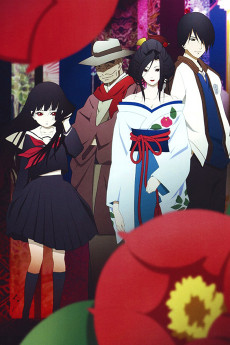 ANIME DramaJigoku Shoujo
ANIME DramaJigoku Shoujo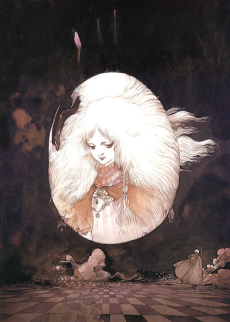 OVA DramaTenshi no Tamago
OVA DramaTenshi no Tamago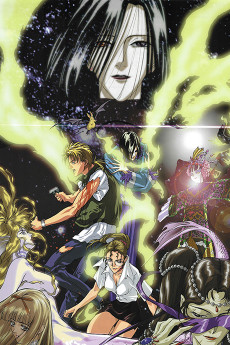 ANIME HorrorPetshop of Horrors
ANIME HorrorPetshop of Horrors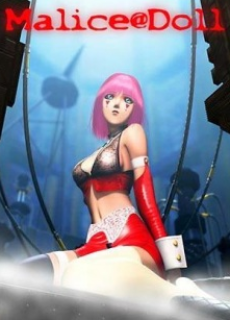 OVA HorrorMalice@doll
OVA HorrorMalice@doll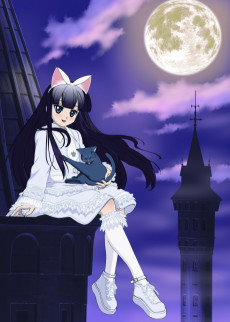 ANIME ComedyTsukuyomi: MOON PHASE
ANIME ComedyTsukuyomi: MOON PHASE
SCORE
- (3.25/5)
MORE INFO
Ended inDecember 22, 2004
Main Studio Daume
Favorited by 228 Users


